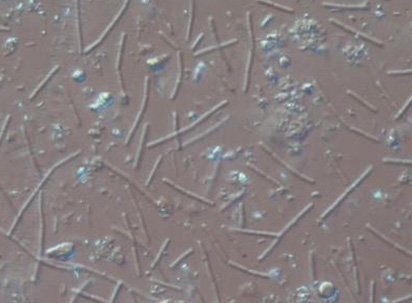
Reference Guide
-

Fungi
Fungi are comprised of microscopic cells that grow in long threads called hyphae. Fungal hyphae bind soil particles into macro-aggregates which increase the soil’s ability to absorb and retain water. Fungi also play an important part in nutrient retention and disease suppression
-

Bacteria
Bacteria also play a vital role in breaking down organic matter and maintaining the soils ability to retain nutrients, assisting in disease retention and helping to improve soil structure by forming micro-aggregates. Certain types of bacteria also undertake a range of other functions including the breaking down of toxic compounds and assisting with nitrogen fixation.
-

Active Fungi and Bacteria
At SFI NZ we measure Active Fungi & Active Bacteria in addition to the total fungal and bacteria biomass. Active biomass is a measure of the organisms that are metabolising or “doing the work”. Fungi and bacteria are active when food resources are available and conditions are favourable e.g. moisture and temperature. If activity is low then the organisms may need feeding.
-

Protozoa
Protozoa are single celled organism that primarily consume bacteria and release nutrient in forms that can be readily absorbed by plants. There are three groups of protozoa in soil – flagellates, amoebae and ciliates. If a soil contains large numbers of ciliates it could indicate low oxygen zones exist (anaerobic conditions.) This has a detrimental effect on plant root, fungal biomass and aerobic bacteria.
-

Nematodes
Nematodes (assay not yet completed in NZ) are classified in a number of functional groups based on their food source i.e. fungal, bacterial or root feeders. There are also predatory nematodes that eat other nematodes. The majority of nematodes are beneficial as they form an integral part of the soil food web. They convert nutrients into plant available forms by consuming either bacteria or fungi. Beneficial nematodes also consume disease causing organisms, and are an important food source for the larger organisms. The presence of root feeding nematodes in high numbers is an indication that the soil foodweb is in a degraded state.
-

Mycorrhiza Fungi
Mycorrhiza Fungi colonises the roots of most terrestrial plant species, forming a mutually beneficial relationship that has a significant role in nutrient & water uptake, and protects against root feeding nematodes and pathogens. Mycorrhiza are especially important in supplying plant available phosphorus. Many studies have documented a decrease in mycorrhizal colonisation when soluble phosphorus levels are high, usually as a result of excess use of inorganic fertilisers.
